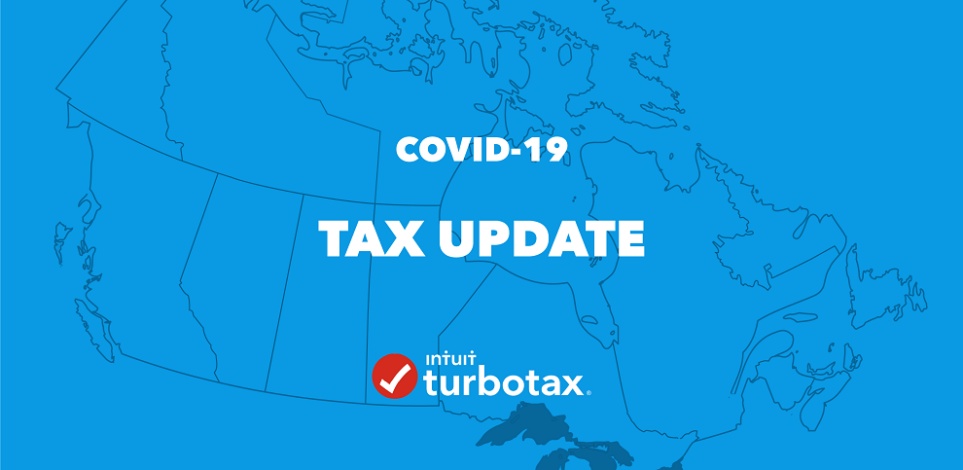TurboTax wants to ensure accuracy with the information we have provided in this article, all content will be updated as we learn more from the Canada Revenue Agency and the Government of Canada.
Recovery Benefit for Canadians Directly Affected by COVID
The Canada Recovery Benefit (CRB) is a new and improved CERB that was effective on September 27th, 2020, and has similar eligibility conditions as CERB. Although CERB was a taxable benefit, taxes were not withheld by CRA before paying it out. Many appliers did not know that it was up to them to save some of this money on the side in anticipation of any tax owing when they file your tax return.
CRA fixed this misunderstanding in the new benefit. 10% of the CRB will be withheld at the source before you receive your payment.
CRB Eligibility Criteria
Unlike CERB when you were able to apply for a four weeks’ period, CRB is applied for every two weeks. To be eligible for CRB, you have to meet all the following conditions for every period:
- You are 15 years of age or older
- You have a valid social insurance number SIN
- You earned at least $5,000* in 2019 or in the past 12 months (earned income for employees, net business income for self-employed)*
- You lost your job for reasons related to COVID
- You had a 50% reduction in your average weekly income compared to the previous year (2019 or the previous 12 months)
- In the same period, you are not receiving Canada Recovery Sickness Benefit (CRSB), Canada Recovery Caregiving Benefit (CRCB), short –term disability benefit, worker’s compensation benefit WCB, employment insurance benefit EI, or Quebec parental insurance plan benefit QPIP
- You were not eligible for EI
- You did not voluntarily quit your job
- You have not turned down reasonable job offers
*Net business is total income after business deductions.
To apply for CRB, contact CRA by phone (1-833-966-2099) or apply through your “My Account” services.
Severance packages and CRB eligibility:
If you have received a bonus or a severance package, you will have to divide the amount by the number of months this money was paid for. For example; if you receive $1,200 bonus for an eight months’ job position, the monthly payment is $1,200/8 = $150. You add this amount to your employment income to determine the eligibility for CRB.
CRB Periods and Payments
Once you determine your CRB eligibility, you can apply for the periods that are available for the 2-week period you are claiming. You can only apply for two weeks at a time unless you are applying retroactively. You can only receive 13 payments maximum even if your income is still affected after the last period.
CRB provides a $1,000 payment before taxes every two weeks. Since CRA will withhold 10% at the source, you will get a biweekly payment of $900.
You can receive your payments by direct deposit within 5 days (or by mailed cheques within 12 weeks). Review your application history in CRA My Account, under “COVID-19 Support Payment Application Details”.
If you find out that you have received a payment that you were not eligible for, you can repay it by either returning it through your “My Account”, or online banking to “Canada Emergency Benefit Repayment”, or by mailing a cheque to:
Revenue Processing – Repayment of CRB
Sudbury Tax Centre
1050 Notre Dame Avenue
Sudbury, ON, P3A 0C3
If you repay the benefits before Dec 31st, 2020, CRA will not issue an income slip and you will not have to report the benefit on your tax return. If you cannot meet the deadline and want to request a payment plan, call the CRA COVID center at 1-833-966-2099.
The $38,000 Income Reimbursement Rule
If your employment or self-employment income in the calendar year is $38,000 or more, you will have to reimburse $0.50 of the CRB for every dollar of the net income you earn above the $38,000.
For example:
- If your net income is $40,000 and you are receiving CRB, you are $2,000 above the threshold: $40,000 – $38,000 = $2,000
- In this case, you will have to pay $1,000 back to CRB.
The net income for the purpose of calculating the reimbursement does not include the payments from CRB. But includes payments from other emergency response benefits such as CERB, CRSB, and CRCB.
Visit this CRA link for more information.
Reporting CRB Payments on Your Income Tax Return
CRA will provide you with a T4A slip to include the CRB payments you have received up to Dec 19th of the tax year in Box 202. Report this amount on line 13000 of your income tax return. Since the next period of payment is from Dec 20th, 2020 to Jan 2nd, 2021, the income from this payment will be reported on the 2021 income tax return. Very important to note is that this benefit is a taxable benefit. Although 10% of the payments will be withheld at source by CRA for taxes, this does not cover the first tax bracket. Federally, the first tax bracket is 15%, then you will have to file provincial taxes as well. Make sure to put some of this money aside to cover those taxes that will be owed back to the government when you file your 2020 tax return. You can also take advantage of RRSPs or other deductions and tax credits, coming this fiscal year; 2021 for your 2020 tax return.
For example:
- If you live in Ontario, the first federal tax bracket is 15% and the provincial is 5.05% which makes a total of 20.05%.
- While if you live in Alberta, the first provincial tax bracket is 10%. When added to the federal tax, it will give a total of 25%.
Visit this TurboTax link on how to calculate your taxes.
